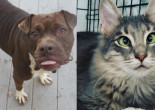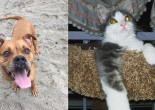The surreal life of Salvador Dalí on display in Misericordia University exhibit
Even if you aren’t into art, you know who he is. How could you forget the pencil-thin mustache, the melting clock, or Adrien Brody’s spot-on performance of the eccentric creative mind in “Midnight in Paris?”
Salvador Dalí is a man whose work made an impact on the arts scene, and it continues to do so today. Misericordia University is bringing such works to campus, including “The Divine Comedy” and “Dalí: The Halsman Photographs” to the Pauly Friedman Art Gallery and “Musings of a Private Collector” to the MacDonald Gallery.
Each exhibit, running Oct. 4-Dec. 10, brings with it a different side of what Dalí is capable of.
“Seeing such a large grouping gives you an insight into just how artistically talented and creative he was in interpreting his subject matter,” said Brian Benedetti, director of the Pauly Friedman Art Gallery.
“The Divine Comedy” is a 40-piece series comprised of colorful woodblock prints that reinterpret Dante’s “Divine Comedy,” an epic poem penned in the 1300s that focused on a vision of afterlife.
“The Halsman Photographs” are a collection that highlights the collaboration between Dalí and photographer Philippe Halsman, through which the artist is photographed in a series of surreal settings, many of which have become iconic.
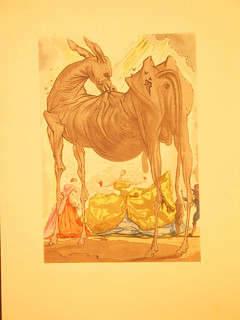
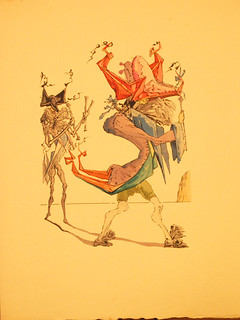
“Musings of a Private Collector” is a mixed-media exhibit comprised of oil paintings, etchings, and prints.
Dalí is known for his contribution to surrealism, a cultural movement and artistic style that uses imagery to create works that, upon viewing, have no real logical comprehensibility. Though his paintings are the most widely viewed and greatest look into who he was as a person, there was more to him than that.
“He was more than an artist,” Benedetti said. “He was also a personality, someone with many interests who was often quoted and covered by the media.”
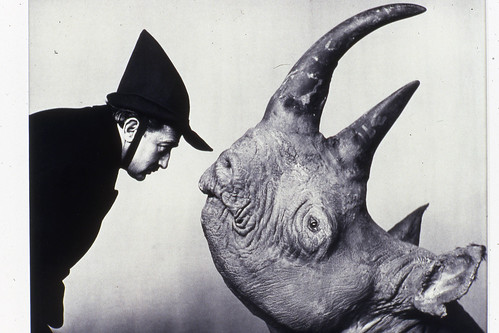
Peculiar points
It’s clear that Dalí was a little strange, but do you know some of the odder things about him?
- He believed he was the reincarnation of his brother. His brother, also called Salvador, had died nine months before Dalí was born. Dalí believed he was his brother reincarnated, and this theme is sometimes featured in his work.
- He designed for a bunch of suckers. He’s the creator of the Chupa Chups logo.
- There’s a method to his madness. Though it seems Dalí paintings are all over the place, there are many reoccurring pieces in his works: melting clocks, elephants, eggs, ants, snails, and locusts.
- He was known as “Avida Dollars” in some circles. This is an anagram of his name and also a reference to his greed. He’d do pretty much anything to make a buck – in both legal and not-so-legal ways.
- He once duped Yoko Ono. Speaking of not legal ways to make money, Dalí conned Ono when she asked him for a strand of hair from his mustache. He demanded she paid $10,000 (she did), and in return, he sent her a blade of dried grass. Why? He was worried she was going to use the hair for witchcraft, of course.
- He and Walter White probably would have been buds. Dalí was inspired by obscure scientific theories, and in 1958, he proclaimed himself interested in the work of physicist Dr. Werner Heisenberg, a name familiar to those who watched “Breaking Bad.”
- He digs cauliflower. In 1955, he filled up a white Rolls Royce Phantom II with cauliflowers and drove it from Spain to Paris, later claiming that “everything ends up in the cauliflower!” Apparently, he was attracted to the vegetables’ “logarithmic curve.”
Location: Pauly Friedman Art Gallery at Misericordia University (301 Lake St., Dallas)
Date: Oct. 4-Dec. 10
Time: 10 a.m.-8 p.m. Tuesday-Thursday; 10 a.m.-5 p.m. Friday; Saturday-Sunday, 1 p.m.-5 p.m.
Cost: Free
“Musings of a Private Collector” is also on display in the MacDonald Gallery. For more information, visit the website or call 570-674-6250.
Photos courtesy of Misericordia University
by Sara Pokorny
Sara is a NEPA native, New England transplant - marketing whiz by day, journalist by night. Lover of all things food and fashion.


